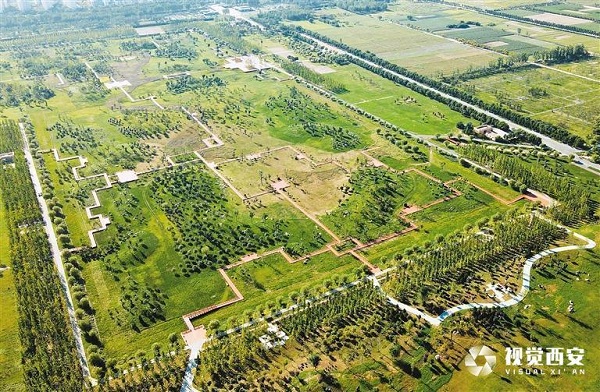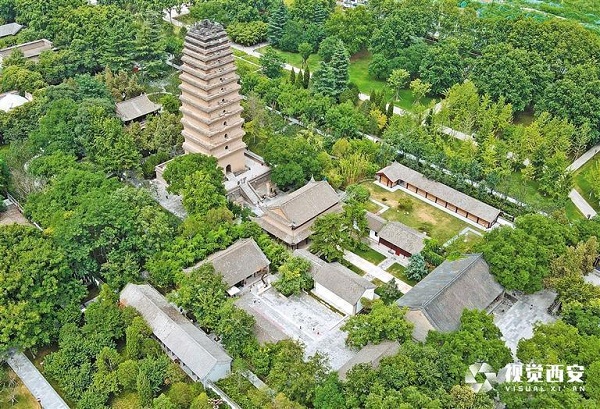Xi'an moves to protect its cultural relics
In recent years, Xi'an, capital of Northwest China's Shaanxi province, has boosted its urban archaeology, the protection of its large sites, implemented key cultural relics protection projects and promoted urban construction and the integration of culture and tourism.
To the northwest of the city, the renowned site of Chang'an city which flourished in the Western Han Dynasty (206 BC-AD 24) covers an area of about 36 square kilometers. Since 2012, a number of municipal departments in Xi'an have started a protection and utilization project for the site, a historical and cultural treasure house.

An aerial view of the Weiyang Palace National Heritage Park in Xi'an. [Photo/Visual Xi'an]
In 2021, the first phase of the 3.2-sq-km Weiyang Palace National Heritage Park of the site opened and the second phase of 2.91 sq km has accelerated its upgrading and transformation.
The park is based on the protection and display of the site – integrating special exhibition halls, viewing boardwalks, landscaping and agriculture.
Through environmental governance and ecological restoration, the areas related to the site have become popular with visitors.
"The protection of the site has objectively achieved the improvement of the living standards of the surrounding people,” said a spokesman of the site.
In terms of cultural relics protection and urban development, Xi'an is said to have paid close attention to the daily maintenance of its cultural relics and to have strengthened the rescue, protection and repair of its endangered cultural relics.

An aerial view of the Small Wild Goose Pagoda in Xi'an. [Photo/Visual Xi'an]
Moreover, the Xi'an municipal cultural relics bureau has successively organized and implemented a number of important cultural relics protection projects at the Xi'an City Wall, the Bell Tower and the Small Wild Goose Pagoda.
In addition, the city has incorporated cultural relics into its integrated development of culture and tourism and combined the development of historical and cultural areas with the urban renewal.
Currently, a number of historical and cultural blocks there have opened to the public or are under construction, in order to further boost the city's cultural offerings.


